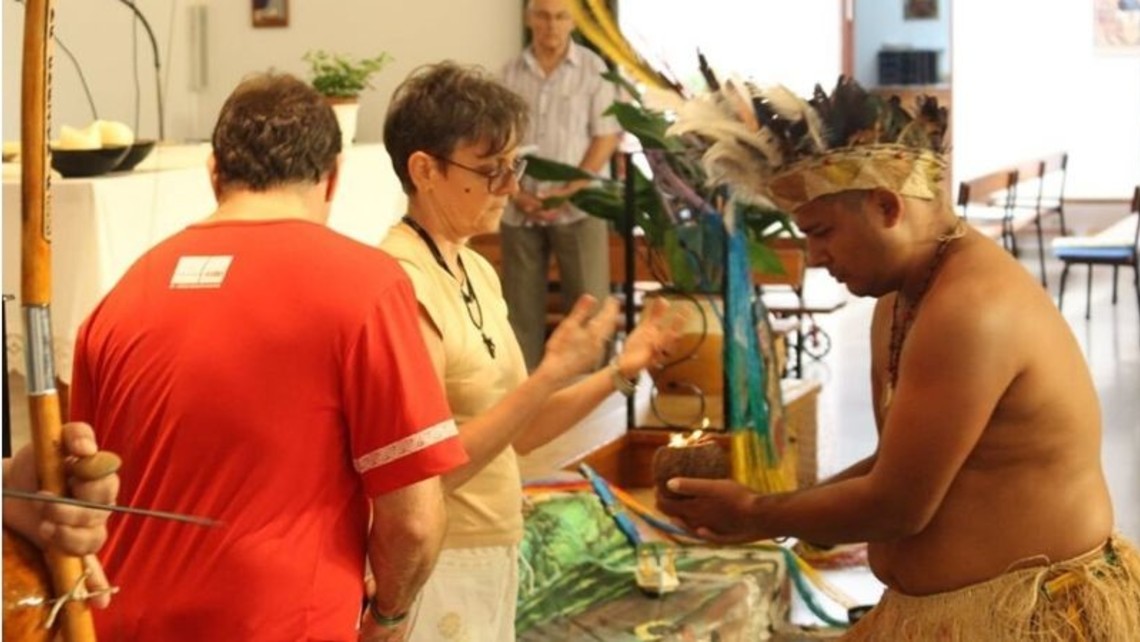
Posted on 07/22/2024 2:55:43 PM PDT by ebb tide

The Dominican Sisters of Pontcalec, still an institute of the Roman Rite, announced on 7 July during Sunday Mass that at their retreat (27 July to 2 August) the community Mass would be celebrated according to the Novus Ordo Missae.
This measure was taken at "the request from Rome".
The news was published in an open letter on LeForumCatholique.org (21 July) by outraged faithful who have settled near the monastery precisely to attend the Roman Mass with their families. They now feel betrayed.
They write that the nuns are about "to abandon the Vetus Ordo, to pass to the Novus Ordo".
Medias-Presse.info adds the claim that the measure is not temporary for the retreat, but that in the future "the community Mass will be celebrated according to the Novus Ordo Missae".

At first Montini's "conciliar church" was irrevesible. Now Bergoglio's "Sin-Nodal church" is irreversible.
Neither of them will outlive the traditional Catholic Church founded by Jesus Christ.
Ping
Trust Jesus. Read the Latin, hear the N.O.
resistance is futile?
Never!
Remember the Battle of Lepanto!
Compare it to Bergoglio and his publicity stunt at Lampedusa.
That doesn't work. The the masses are totally different.
The Vetus Ordo (Latin for “Old Order”) refers to the Extraordinary Form of the Roman Rite, also known as the Tridentine Mass, which was the standard liturgy of the Catholic Church until the Second Vatican Council (1962-1965).
The Novus Ordo (Latin for “New Order”) is the Ordinary Form of the Roman Rite, introduced after the Council, and is currently the most widely used liturgy in the Catholic Church.
1. Language and Vernacular
Vetus Ordo: Primarily Latin, with some use of vernacular languages in certain regions. Novus Ordo: Mainly vernacular languages, with some use of Latin.
2. Rite Structure
Vetus Ordo: Follows the traditional structure of the Roman Rite, with a clear distinction between the Liturgy of the Word and the Liturgy of the Eucharist.
Novus Ordo: Blends elements from the Liturgy of the Word and the Liturgy of the Eucharist, with a greater emphasis on communal participation.
3. Prayers and Rubrics
Vetus Ordo: Preserves many ancient prayers and rubrics, such as the use of incense, bells, and elaborate ceremonies.
Novus Ordo: Simplified and modernized prayers and rubrics, with a focus on greater flexibility and adaptability.
4. Eucharistic Prayers Vetus Ordo: Uses four Eucharistic Prayers, with a strong emphasis on the sacrifice of the Mass.
Novus Ordo: Offers four Eucharistic Prayers, but with a greater emphasis on the communal celebration and the role of the priest as presider.
5. Liturgical Orientation/
Vetus Ordo: Typically celebrated with the priest facing east (ad orientem) and the congregation facing the same direction.
Novus Ordo: Often celebrated with the priest facing the congregation (versus populum), although some parishes may still use the ad orientem orientation.
6. Sacraments and Rites
Vetus Ordo: Preserves traditional sacramental rites, such as the use of holy water, baptismal fonts, and the imposition of ashes.
Novus Ordo: Incorporates some modernizations and adaptations, such as the use of electric candles and revised baptismal and funeral rites.
In summary, the Vetus Ordo and Novus Ordo differ in language, structure, prayers, rubrics, Eucharistic prayers, liturgical orientation, and sacramental rites. While both forms are valid and licit, the Vetus Ordo is often characterized as more traditional and formal, while the Novus Ordo is seen as more modern and flexible.
Has anyone ever seen a Tridentine Gay Pride Mass?

Or a Pachamama Mass?

Disclaimer: Opinions posted on Free Republic are those of the individual posters and do not necessarily represent the opinion of Free Republic or its management. All materials posted herein are protected by copyright law and the exemption for fair use of copyrighted works.